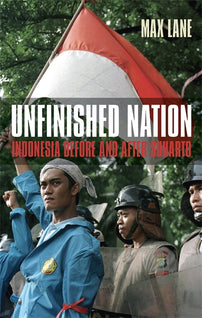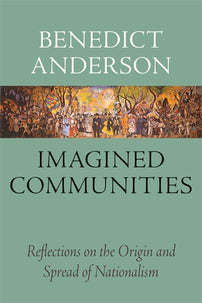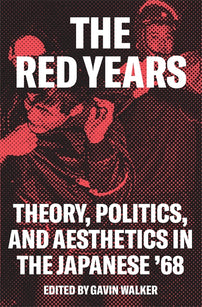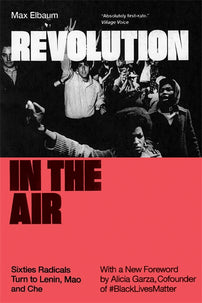1968: A Crushing Defeat for the Indonesian Left
In 1968, Suharto's authoritarian New Order regime obliterated the Indonesian Communist Party's efforts to rebuild after the 1965 massacre.

In Indonesia, 1968 was a year of defeat for the Left. A military operation, called the Trident (Trisula) Operation obliterated attempts by remnants of the Indonesian Communist Party (Partai Komunis Indonesia, PKI) to organise resistance against Suharto’s authoritarian New Order regime from bases in southern rural East Java. The strongest base, in remote South Blitar, was also a place of refuge, because leftists were being sought and detained or killed in the rest of Indonesia. The party had been, in 1965, the world’s third largest communist party. It was pro-China and was critical of the Soviet Union’s peaceful coexistence strategy in the Cold War. It had enjoyed a close relationship with Indonesia’s President Sukarno who was sympathetic to leftist ideas. From early October 1965, however, following its implication in the abduction and murder of seven army officers, the PKI has been subjected to violent army-led pogroms. In 1968 then, inspired by the rise of guerrilla movements in other parts of the world, the PKI leadership tried to salvage what was left of the party after vicious and murderous terror against its members and sympathisers.
The army organised and led a violent suppression campaign against the PKI, after linking it with a group calling itself the Thirtieth September Movement. The Movement abducted and killed seven army officers, including the highest leadership of the army, on 30 September and 1 October 1965, in a botched attempt, according to Movement spokespeople, to reveal to Sukarno the identities of army officers who were conspiring against him in support of the United States and its Western allies. On 2 October 1965, the PKI issued an editorial to support the Thirtieth September Movement in its newspaper, Harian Rakjat (People’s Daily). The army, under Major General Suharto, linked the PKI to the army officers’ killings as a pretext to destroy it as a political force in Indonesia. Evidence has now come to light about minor involvement in the Movement’s activities on the part of the PKI chairman, DN Aidit and the party’s Special Bureau (a section tasked with liaising with members of the armed forces sympathetic to the party). However, the rest of the party leadership, members and sympathisers, who had little or no knowledge of the plans, also paid the price. They were hunted down, then killed or detained in prisons, army bases, and in hastily established informal detention and interrogation centres.
Scholarly consensus now places the death toll at half a million, mainly in Java and Bali. Leftists were killed by the army, police and civilian militias. In East Java, where the death toll is thought to be the highest at 200,000, civilian perpetrators of violence were Banser militias, a paramilitary group associated with Indonesia’s largest Muslim organisation, Nahdlatul Ulama (NU). Amnesty International estimates in 1977 that between 600,000 and 750,000 leftists were detained for varying lengths of time from October 1965, accused of being involved in the Thirtieth September Movement.
With key leaders killed or missing (Aidit for example was shot dead by late November 1965), a new underground leadership under Sudisman attempted to reorganise the PKI in 1966. They concluded, firstly, that Aidit had committed grave errors by putting too much faith in Sukarno and not safeguarding the party sufficiently against risks of "white terror" including, for example, by having a clandestine wing. The PKI, founded in 1914 by a group of Dutch social democrats as the ISDV, the Indies Social Democratic Association, had operated underground from 1926 to 1945 during the Dutch and Japanese colonial occupation. However, under Aidit who assumed leadership of the party in 1951, it had operated largely in the open (except for the shadowy operations of the Special Bureau). The PKI enjoyed considerable support in Indonesia, with Aidit estimating the size of its membership and sympathiser base, including those in leftist mass organisations under the political control of the PKI, at 27 million in 1965. The PKI influenced organisations such as trade unions, cultural groups, and peasants, women, and youth organisations. It was the fourth strongest party in the 1955 general elections and performed extremely well in Central and East Java in the 1957 regional elections. Such successes suggested that the party had little need for a clandestine or underground section.
Party leaders were, however, conscious that they were vulnerable against the army, who saw the PKI as a threat to its wide-ranging roles in Indonesian society. In January 1965, Aidit proposed publicly the creation of a Fifth Force consisting of armed peasants and workers. The PKI had also insisted that the army be subjected to Sukarno’s doctrine of Nasakom (an acronym consisting of nationalism, religion, and communism). Army leaders rejected these ideas, not wanting to cede its "near monopoly of the instruments of violence," as renowned scholar, Rex Mortimer wrote. The actual experience of "white terror" in 1965-66 influenced the new PKI leadership’s thinking when considering how to salvage the party and its members. Its underground history, as well as examples from sister parties in China and North Vietnam led them to conclude in 1966, as set out in a document called the "Criticism – Self Criticism" that the party needed to establish progressive rural bases from which to rebuild. Also, according to Rewang, who, at the time of our interview in 2008, was the sole surviving leader of the South Blitar base, the party needed to take up armed resistance with the disappearance "of any legal guarantees" for communists in Java. Communists were still being hunted three years after the Thirtieth September Movement.
The party leadership faced significant challenges. The army had stripped President Sukarno of his powers and eventually of his presidency for his failure to deal decisively with the fallout from the Thirtieth September Movement by banning the PKI. Suharto took over as president formally from 1967 with the blessing of the Provisional People’s Consultative Assembly. The New Order regime under Suharto was inaugurated. A 1966 parliamentary decree imposing a ban on the PKI and on Marxism-Leninism remains in place today. A July 1966 American edition of Time magazine hailed Suharto’s accession to power as "the West’s best news in Asia."
It was in this context that the PKI decided to establish rural bases in the mountainous limestone areas of southern Java. In South Blitar, there was strong support for leftist politics and cultural activities. The 1965-66 operations had focused on the town of Blitar and plantations surrounding it where peasant activists and unions were active, but South Blitar was somewhat too isolated to merit a great deal of attention from the army. As the anti-communist operations continued in the capital, Jakarta, and other cities, the PKI East Java regional committee began to investigate where surviving leaders and activists could go to escape, and possibly, to rebuild.

Bakung village, South Blitar. Photo: Vannessa Hearman.
Dozens of party activists and leaders journeyed to South Blitar, some bringing children and spouses, from late 1966 onwards. They lived with local villagers and helped with farmwork and tried to blend in with the community so as not to arouse suspicions. The relative safety of South Blitar provided them with opportunities to reunite with family and friends since the 1965-66 violence. Some party members then began to operate clandestinely in cells to investigate the possibilities of reestablishing the party and to resist the army-dominated New Order regime. Though the regime was to endure for 32 years, in the late 1960s it was still possible to be optimistic about resistance.
In April 1967, Major General Mochamad Jasin took over as the new commander for the army’s Brawijaya territorial division that presided over East Java. Suharto ordered Jasin to East Java, "because he needed a strong man" to “New Orderise” East Java, according to Jasin’s memoir. Coming from his position as military attache in Moscow, Jasin was shocked to find that the other branches of the Armed Forces in East Java were extremely dissatisfied with the army’s unseating of Sukarno. There was also, he explained to the East Java regional parliament in 1968, a fast diminishing will to crush the communists once and for all, including from those sitting in the chamber. Jasin then purged organisations and parties, including Sukarno’s Indonesian Nationalist Party, PNI, that could have been communist front groups. His efforts to New Orderise the province was greatly assisted when he began receiving reports of the presence of "new people" in South Blitar and an increase in violent crimes in that area.
Some 5000 soldiers and 3000 "militias and vigilantes" were deployed in an area roughly the size of 3000 square kilometres. The size of the force and the choice of a counterinsurgency strategy aimed to secure rapid victory and to portray the enemy as being larger and fiercer than it had been. The area was divided into three operation zones under the control of six army battalions. Local administration was brought under an army caretaker system that then proceeded to register the population in their efforts to find newcomers to the area. The army evacuated villages of their inhabitants to screen them for their allegiances to the PKI and to prevent them from helping the fugitives who were hiding and surviving in the forests nearby. They instructed villagers to pull out food crops such as sweet potatoes from gardens on the edge of forests, so much so that at the end of the three-month operation, reports of imminent famine emerged. Villagers were also forced to help the army, such as burying those killed in operations and participating in "fence of legs" patrols, walking for days with soldiers in order to flush out fugitives across the mountainous, forested landscape.
Though the fugitives had begun preparations for guerrilla training, they were no match for the army’s firepower, being poorly armed and unused to fighting. Army sources told the New York Times in August 1968 that an estimated 2000 "party members" were captured or killed as part of operations from April that year. However, given that the number of political fugitives in the area, including children, would have been fewer than 200, those captured or killed would have included a significant proportion of local villagers. Villagers captured in the operations were detained and forced to supply their labour to roadbuilding and other infrastructure projects that were designed to open the area up to long term military surveillance. The Trisula Operation ended formally on 7 September 1968, but for decades afterwards, the area became synonymous, as a result of New Order propaganda, with being a PKI support base.
The army transported the PKI leaders and activists out of South Blitar to Jakarta and other cities in Java for detention and eventual trials, many years later, for subversion. Unlike the summary executions of 1965-66, this time the New Order regime was concerned to promote itself as law abiding in its ongoing commitment to fighting communism. One political prisoner, Pudji Aswati, was formerly a teacher and a member of the Indonesian Women’s Movement (Gerwani). After ten years of waiting, she was tried in 1978 and sentenced to 15 years’ jail for her role at South Blitar. The judge paid no regard for the ten years she had waited in the Malang Women’s Prison in East Java. Her husband, Gatot Lestario, who formerly served as secretary of the South Blitar base, was sentenced to death and executed in July 1985. Relatives had cared for the couple’s two children from 1967, when the two went on the run to South Blitar. Finally, Pudji was released in 1989, gravely ill with cancer. She lived her last remaining years with her former fellow inmates, also leftist women activists, and enjoyed visits with her children and grandchildren.
Although small-scale guerrilla operations by PKI remnants continued in West Kalimantan until 1974, the obliteration of the South Blitar base in 1968 closed an important chapter in the history of Indonesia’s left movement. Following one of the worst instances of mass violence in the twentieth century, sections of the PKI became inspired by the rise of guerrilla movements throughout the world in the late 1960s. For the New Order regime, however, the crushing of the PKI base at South Blitar allowed it to consolidate its rule and silence its critics.
Born in Indonesia, Vannessa Hearman is a historian of South East Asia. She has researched and written on the 1965-68 anti-communist operations in Indonesia for over ten years. Her book, Unmarked Graves: Death and Survival in the Anti-Communist Violence in East Java, Indonesia is published by NUS Press. She is lecturer in Indonesian Studies at Charles Darwin University in Darwin, Australia.
[book-strip index="1" style="display"]




